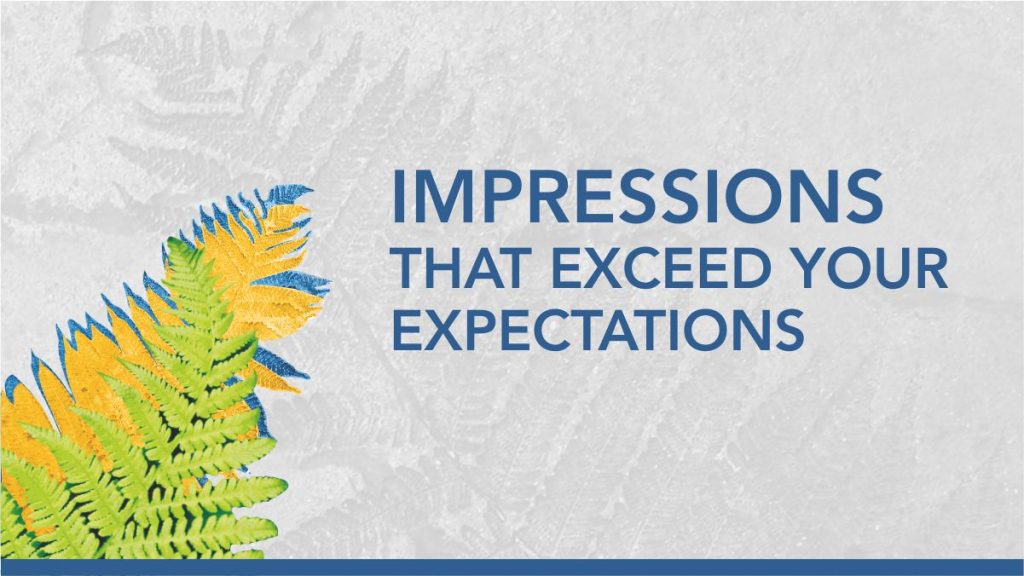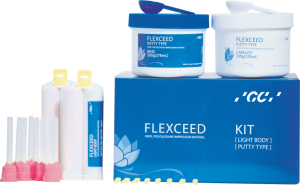GC FLEXCEED – Vinyl polysiloxane Dental Impression Materials
ABOUT
Thixotropic impression material for all popular impression techniques.
The adapted flow, extended working time and the snap set make this an extremely easy to use A-silicone material.
FLEXCEED is a significantly advanced, addition reaction silicone (platinum catalyzed) with outstanding physical properties, optimum handling and accuracy characteristics. The reaction silicone also has a unique combination of innovative, clinical advantages for impression taking. FLEXCEED Vinyl Polysiloxane (VPS) impression materials produce crisp, extraordinarily smooth and precise impressions for models, crowns, bridges and dentures.
- Truly Hydrophilic
- High tear strength
- Accurate impressions
Features of VPS Dental Impression Material:
- Improved handling
- Dimensional stability
- Extended working time
- Improved thixotropicity
- Stable in cold sterilization solution
- Less time in the mouth to reduce distortions
- More than 2-1/2 minutes to manipulate and sit
- Better flow under pressure without being runny
- Accurate and easy to work with at eliminating voids
- Models can be poured up to 2 weeks after impression taking
- Penetrates critical, hard to reach areas in order to replicate accurate details
Advantages of Dental Impression Material
- Easy to mix
- Optimized thixotropic properties
- Extended working time
- Sharp setting curve
- Truly Hydrophilic properties
- Extremely high precision
- Ideal affinity to modelling stone materials
- High recovery from deformation
- High dimensional stability
- High elasticity
- Best tear resistance
- Can be disinfected
FLEXCEED
The heart of a good restoration Impression
Bad impressions cause depressions
The process of creating a good quality dental impressions restoration that fits and works well, starts with ensuring that you take the most accurate impression possible. If your impression doesn’t capture the precise details of the treatment area, the laboratory will not be able to produce the prosthesis correctly and you will probably find it very difficult, if not impossible to fit. The result is extra work for you, often for which you cannot charge, disagreement perhaps with your laboratory and almost certainly inconvenience for your patient who may also become upset with the ‘poor quality’ of the work. Bad impressions are quite simply, bad for business.
The Impression material What then are the important features to look for when choosing a dental impression material?
- Optimal Setting Time (3minutes):
Better both for your patients and for your business. - Good hydrophilic properties (wettability):
Helps to ensure optimum reproduction, even in a wet environment and allows the gypsum to flow into every detail. - High tear strength:
Reduces the risk of damage to the impression during removal from the mouth. - High elasticity:
Improves comfort for both patient and technician. To help ensure that you always take an accurate impression you need to choose the right impression material for the procedure, support the correct functioning of this material with the most appropriate type of impression tray, and of course, employ a good impression taking technique!
The GC Education Guide ‘Impression Trays: Guide to Correct Tray Selection’ highlighted the importance of the tray and gave advice on how to choose the most suitable tray from the myriad of different types available. Selecting the right impression material from the vast range on offer can be equally difficult and so to accompany the GC Guide on Impression Trays, GC has produced this Guide on Impression Materials and their correct selection.
- Good recovery from deformation:
Ensures an exact replica of the treatment area is retained after the impression is removed from the mouth. - Dimensional stability:
Ensures that the dimensions of the final impression will not be affected during storage and transport. - Smell and taste of the material:
Can be very important as some dental impression materials are highly pungent, which can be very irritating for dental staff and patients. Other considerations - When carrying out small restorations, it is easier to use fast setting impression materials. However, with larger restorations, normal setting materials are recommended.
- Avoid the use of latex gloves or retraction cords that can affect the setting of the impression material.
- After removing the impression, examine it carefully for any imperfections, voids and air bubbles.
- Disinfect the impression before you send it to the dental laboratory. Your dental technician will appreciate it.
FAQ’s
What is elastomeric impressions material?
When the imprint is removed from the mouth, elastomeric impression materials (silicones and polyethers) give a high elastic recovery and tolerable flexibility.
What is the advantage of having a “soft” putty consistency with FLEXCEED?
It offers easy manipulation of the base & catalyst, therefore, reducing mixing time and giving additional working time. FLEXCEED putty requires less effort to seat the tray while taking an impression, therefore improving the comfort of the patient. Less effort to seat the tray also means a reduced quantity of material is needed for the impression.
Is there any difference between Light Body & Ulta-light Body consistencies?
There is minimal difference between the two forms; It totally depends upon the operator’s preference. Both schools of thought exist and are appreciated equally.
Why are mining tips better for impression quality and why are they more economical than hand mix versions?
Using FLEXCEED mixing tips means avoiding the wastage of material on the mixing pads. The spirals in the mixing tube take the majority of the volume in the mixing tip and hence the wastage is negligible compared to the comfort offered.
Why is FLEXCEED preferred over Plluether impression materials?
Polyether material has a bitter taste and uncomfortable smell; They are characterized by high rigidity once set and water absorption during disinfection. Whereas FLEXCEED is characterized by SOFT PUTTY and has no smell or taste.
Why is FLEXCEED a better choice than C-Silicones?
The C-Silicone is available only as putty for tray material and light body in a hand-mixed tube delivery. The additional steps and time were taken to hand mix and load a syringe for direct delivery lead to issues of:
- inaccurate proportioning
- cumbersome preparation
- additional chair time for the procedure
- excessive material wastage
Also, the C-Silicone impressions cannot be stored as they shrink within three hours despite the inclusion of additives used to absorb ethyl alcohol, the by-product of the setting reaction.
Why has FLEXCEED been developed for the putty wash technique?
Quick and simple techniques are often the most successful techniques! Introducing an affordable putty-wash VPS impression material means you can benefit from a simple, stable and cost-effective impression-taking technique.
How to Use VPS impression material?
The precision of the material may reportedly be stored for up to 14 days before pouring the dies for both polyether and vinyl polysiloxane imprints, according to the manufacturers.


